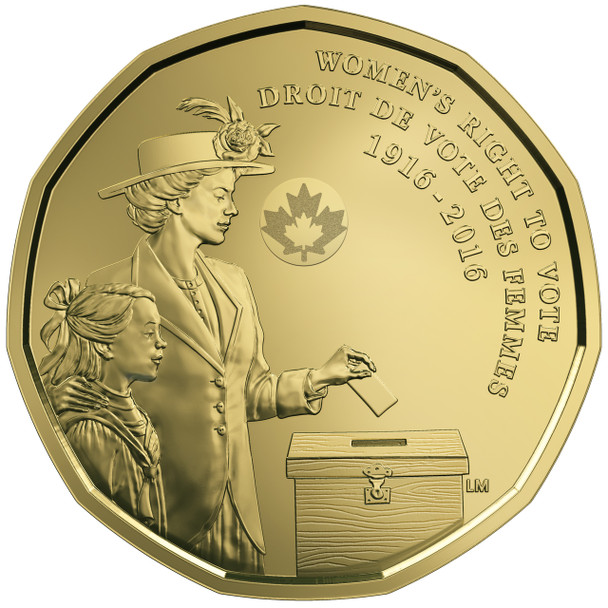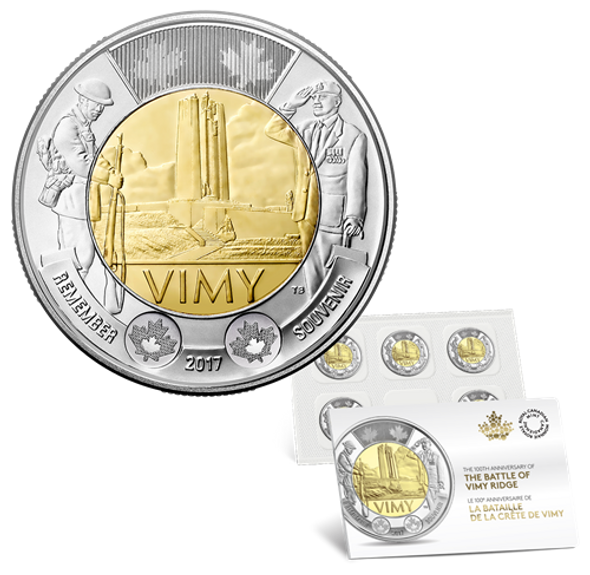Description
Commemorate the 100th Anniversary of Women's Right to Vote with this beautifully crafted $1 coin depicting a woman proudly casting a ballot, while her daughter, who represents the future, looks on.
This sealed keepsake is the perfect way to pay tribute to the beginnings that would one day lead to voting rights for women across the nation.
THE STORY BEHIND OUR HISTORY
100TH ANNIVERSARY OF WOMEN'S RIGHT TO VOTE
A century ago, Manitoba, Saskatchewan and Alberta granted most women the right to vote in provincial elections, beginning the journey that would one day lead to securing voting rights for women across Canada. This hard-won victory in the Prairie Provinces was the result of years of campaigning by women's groups, beginning as early as 1890. As a result, women in Manitoba, Saskatchewan and Alberta could not only vote, but also run for and hold political office—granting them a far greater ability to drive social and political change. This breakthrough was a critical turning point in the evolution of women's rights and equality in Canada.
A Complicated Journey
Despite this victory in the Prairies in 1916, the path to universal suffrage in Canada was full of twists and turns. Women's experiences varied widely depending on where they lived, as well as their cultural, social, and economic status. While Ontario and British Columbia granted women the right to vote provincially in 1917, women in Quebec didn't enjoy the same rights until 1940. Some ethnic minorities were still excluded, and First Nations men and women weren't able to vote federally until 1960.
The Famous Five
Another important step in the evolution of women's political rights in Canada is the "Persons Case," brought forward by the Famous Five: Nellie McClung, Louise McKinney, Henrietta Muir Edwards, Emily Murphy, and Irene Parlby in 1927. The Famous Five collectively requested that the Supreme Court clarify whether or not the word "persons" in the British North America Act included women, and by extension, if women could serve in an appointed office. Dissatisfied with the Supreme Court's ruling which declared women nonpersons, the Famous Five took their case to the Judicial Committee of the Privy Council in Britain, Canada's highest court of appeal at the time. On October 18, 1929, Lord Sankey, Lord Chancellor of the Privy Council, ruled in their favour, paving the way for the first female Senator in Canada in 1930, Cairine Wilson.
100th Anniversary of Women's Right to Vote $1 Coin
The Royal Canadian Mint is proud to commemorate this defining historical moment with the 100th Anniversary of Women's Right to Vote $1 coin. Designed by Canadian artist Laurie McGaw, this circulation coin depicts a woman proudly casting a ballot while her young daughter looks on—an important feature according to the coin's designer. "As I researched this topic, I thought of my Manitoba-born grandmother. Married in 1916, she passed on to her four children, including my mother, a strong sense of fairness, responsibility, and curiosity about the world. Politics, I remember, was a favourite topic of conversation around the kitchen table. Community involvement was important. For her to vote for the first time must have been a powerful experience! And now my daughter is a strong, accomplished woman who values the efforts—as I do—of those who fought so hard to secure the vote for women and their place in society."













